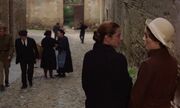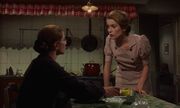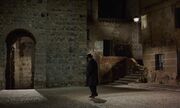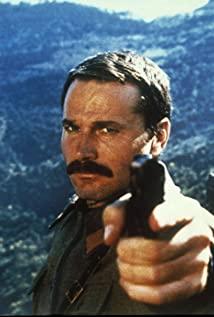Tristana, Luis Buñuel, 1970 (Tristana) Orphaned Tristana was adopted by his uncle. This defunct but face-saving old aristocratic uncle treats Tristana as both his daughter and his lover, until the latter runs away with a young painter. But a few years later, Tristana, who was seriously ill, returned to his uncle... Buñuel doesn't seem to be completely without sympathy for the deplorable old aristocratic male lead, but his description is still extremely acerbic and gives the male lead a final fate. The changes in the young daughter/girlfriend played by Catherine Deneuve after her illness are undoubtedly the result of being corroded by the male protagonist's long-term parenting/control. (Of course, this film is the first film that Buñuel re-shoots in Spain after Viridiana was banned by the Franco regime in 1961. The scene where the male protagonist keeps insisting on helping the poor and resolutely not allowing the priest to come to the house may be just that. To satisfy the censors — "the villains are such hypocrites" — it's hard to figure out.) The continuity between the film and Viridiana is unmistakable: the plot and characters are very similar, with a focus on the old perverted male protagonist , foot fetish, one of Buñuel's major hobbies outside of entomology, is also clearly visible. The Buñuel-esque story is basically that the aristocracy doesn't rot brilliantly in a hopeless circle of death, bit by bit, until its demise, it's consistent. Buñuel is complex and ambiguous at the same time. All the characters in his films are indistinguishable between good and evil. Either their souls have long been twisted or they are on the verge of degeneration, from nobles to dumb, old to young girls, from priests in Nazarin to beggars in Viridiana... In this film, it seems that the director can feel Regarding the complex emotions of the old pervert created by the patriarchy of the male protagonist, the distortion of love, and the degeneration caused by the desire for control, the story the director is telling seems to have some kind of personal color, rather than a simple accusation or elegy. The tragic ending of the story is therefore more inevitable and more convincing.
In this film, Tristana climbs the bell tower around the dark stairs in a dream, and encounters a horror scene on the top of the bell tower. The thrilling encounter was inspired again by Buñuel's "He" in '53. It can be said that between Hitchcock and Buñuel, two directors who are said to admire each other very much, the former is digging for gold in the anxiety of the new American middle class, and the latter is whipping up the nostalgia of European reactionaries.
View more about Tristana reviews











